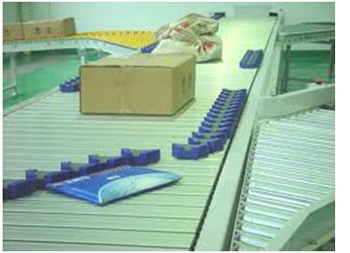Holste Says: |
 |
| ...Those that are planning on deploying automated equipment, should give serious consideration to the types of products and materials they will be handling and the ability of the equipment to reliably handle those products. |
|
What Do You Say?
|
|
|
|
Previous Columns by
Cliff Holste |
|
|
For some time now the construction of vendor shipping cartons, used to ship all types of products, has been going through a redesign process leading to the accelerated use of “softer” and “lighter” materials. Cardboard is being replaced with stretch-wrap material. Many of these “cases” do not even have a cardboard tray on the bottom for support making them problematical for handling on powered roller conveyor and on some of the most common types of automated sorting equipment used in the DC.
One of the most obvious consequences of the wide spread use of “economical” carton construction is in the bulk storage of pallet loads. Whereas pallet loads of hard or strong cardboard cartons can be safely stacked (4) high on the floor – are now limited to just (2) high. Going up any higher may cause the cartons on the bottom to crush creating a potentially dangerous and costly situation.
In DCs equipped with conveyors, sorters, and other mechanized and automated carton handling systems, the amount of non-conveyable products is rapidly increasing. Some of this is the result of product downsizing, where cases and inner-pacts that were once conveyable are now too small, too light, or too flimsy to be safely transported by the DC materials handling system. Much of the problem is related to carton construction that is so soft and weak that the carton will not properly hold the contents while being handled on mechanized equipment. When these types of cartons are picked-up without supporting the bottom surface, there is a risk that the product inside will break through the bottom.
This is reminiscent of the handling problems associate with rice-paper cartons that were at one time typical to products imported from China. These cases were so bad that assuming they even survived overseas handling and shipping (which was by no means a sure bet) by the time they arrived at the DC receiving dock they needed to be re-boxed before they could be put away.
Testing for Product Handling Capability
The above should provide reason enough for shippers, especially those that are planning on deploying automated equipment, to give serious consideration to the types of products and materials they will be handling and the ability of the equipment to reliably handle those products.  Companies should have all products that may require special handling tested by the equipment provider before making a final decision on system design and equipment deployment. Companies should have all products that may require special handling tested by the equipment provider before making a final decision on system design and equipment deployment.
As an example: the adjacent picture provides some idea of the range of product types and configurations that some automated sliding shoe sorters are designed to handle.
Other types of sorters will have handling pluses and minuses based on their design, sorting rate, and cost.
It’s interesting to note that the product handling advantages of the sliding shoe sorter are becoming increasingly more relevant as packaging engineers continue to push the limits of economical carton design and construction. Once considered justified for only high throughput operations (running at 6,000 packages per hour or more), sliding shoe sorters are now being deployed for their product handling flexibility and adaptability.
Costs Continue to Add-up
The impact of changes in package construction must be factored into the design and selection of all types of mechanized and automated handling equipment especially those operating at high speeds and in hard to access areas.
Transporting products that require special handling may require a higher degree of manual interaction, perhaps being delivered to a manual sorter induction station via lift truck or AGV system where they can be “picked” and placed directly onto the sorting equipment.
A broad range of after-sort equipment designs, including high-density gravity roller or skate wheel conveyor and/or custom designed chutes, are available from material handling system providers to transport hard-to-handle product from the sorter to shipping.
|